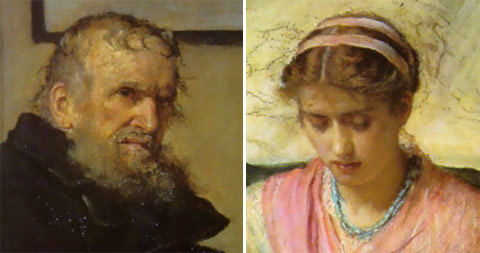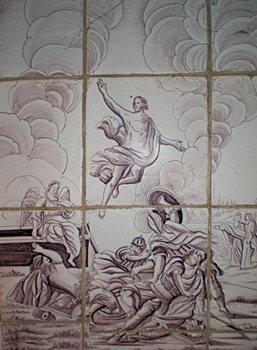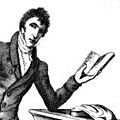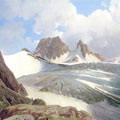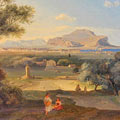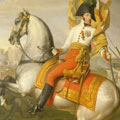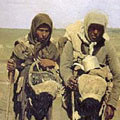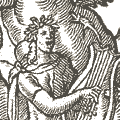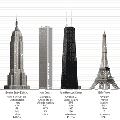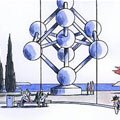De reis naar Italië was in de negentiende eeuw niet alleen voor veel Europese schilders een (bijna) verplicht nummer, ook in de Verenigde Staten maakten veel schilders de reis naar het oude Europa. Een van hen was de van origine Engelse Thomas Cole die tussen 1829 en 1831 o.a. in Italië verbleef. Bij zijn terugkeer in de Verenigde Staten zou hij aan het begin staan van de zgn. Hudson River School. De schilders van deze school keerden bewust Italië en het oude Europa de rug toe en verheerlijkten de imponerende Amerikaanse wildernis met schilderijen in even imponerende formaten.
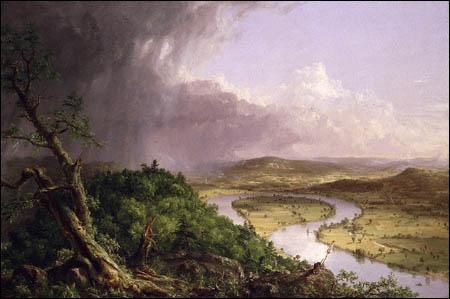
The Oxbow, 1836
Voor de identiteit van de jonge Verenigde Staten hadden deze majestueuze natuurtaferelen bijzondere betekenis. Zo wilde men graag geloven dat de ongerepte natuur die men aan de overzijde van de oceaan aantrof, zonder sporen van beschaving, laat staan van verwoestende industrialisering, een aards Paradijs was dat de Schepper persoonlijk aan de Amerikanen geschonken had. Het was voor de jonge Verenigde Staten de compensatie van het gebrek aan verleden en cultuur. God had de Amerikanen bevoorrecht door hen te laten delen in de ongereptheid van Zijn Schepping.
Arthur Danto
Thomas Cole was born in 1801 at Bolton, Lancashire in Northwestern England and emigrated with his family to the United States in 1818. During the early years Cole lived for short periods in Philadelphia, Ohio, and Pittsburgh where he worked as an itinerant portrait artist. Although primarily self-taught, Cole worked with members of the Philadelphia Academy, and his canvases were included in the Academy’s exhibitions. In 1825, Cole discovered the haunting beauty of the Catskill wilderness. His exhibition of small paintings of Catskill landscapes came to the attention of prominent figures on the New York City art scene including Asher B. Durand, who became a life-long friend, and his fame spread. While he was still in his twenties, Cole was made a fellow of the National Academy.
In 1829-1831, Cole returned to Britain for study and to attend to family business and to travel to France and Italy. These years were among the most happy and productive of his life. Cole met a large number of wealthy Americans traveling abroad and received numerous commissions from them, increasing his reputation and stature. Cole returned to New York City in November of 1832 and mounted an exhibition of his European paintings, which aroused considerable public interest. Shortly thereafter, Cole first established his rural studio in Catskill, New York, when he rented a small outbuilding at Cedar Grove.
( Bron: thomascole.org )
Robert Hughes
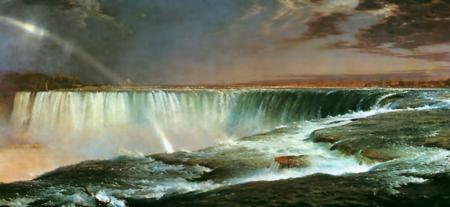
Na Cole’s vroegtijdige dood in 1848 had hij nog geen opvolger als leider van de Hudson River School gevonden. Maar in 1857 maakte Frederick Edwin Church (1826-1900) in Amerika én Europa verpletterende indruk met zijn panorama van de Niagara Falls en bracht hij de Hudson River School tot een nieuw hoogtepunt.
van Robert Hughes, episode 3:
The Wilderness and the West
Bron: youtube.com
Hudson River School
Asher B. Durand (1796-1886)
Thomas Cole (1801-1848)
John F. Kensett (1816-1872)
Martin Johnson Heade (1819-1904)
George Inness (1825-1894)
Frederick Church (1826-1900)
Albert Bierstadt (1830-1902)

